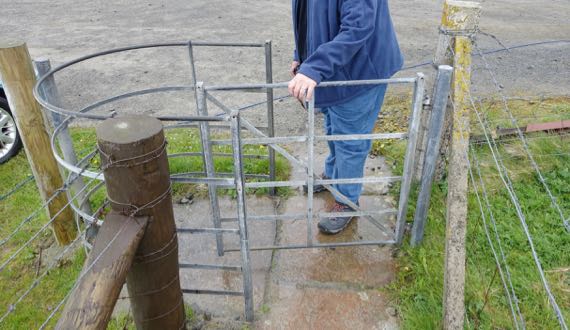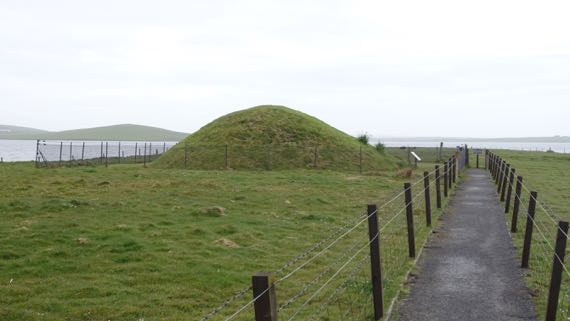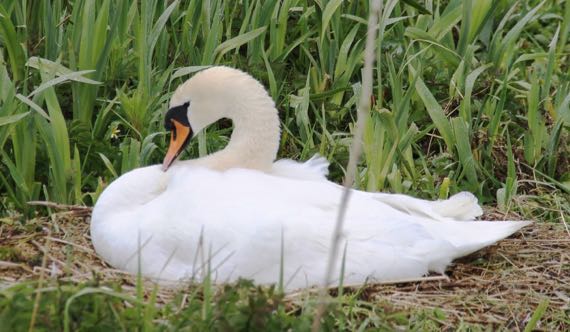Island exploration
Wednesday, 27 May 2015

We are frequently entering landscape-spaces that are maintained by four-foots. To keep them in the right zones (aka pastures), we often pass through this kind of gate. I call them nudge-gates in my head, as I don’t know the “real” name. The gate section pivots, and you can only pass through if you pull it, then pivot around it. Since the sheep (mostly), only nudge the gates, they effectively close off passage…and remain in their designated area. Meanwhile, after we pass into the sheep-zone, we must “mind our shoes,” as they say here….

Skara Brae (say scare-uh bray; extra points if you can do the Scottish “r”) is a 5K-yr-old Scottish Neolithic hamlet that was buried by sand dunes perhaps 4500 years ago, and only exposed after a storm in 1850. Parts were being excavated as late as the 1970s. The domestic units are circular stacked-stone structures, entered through a low, covered passageway. The settlement has about six units that were occupied contemporaneously, although it’s atop an earlier set of household units that are unexcavated as that would involve removal of the later ones atop them. Anyway, this is a reconstruction of one of the houses, but without the passageways that lead to neighbor-homes and would have looped around it.

Here’s the real thing, roofless and open to the sky. The sign said that people brought refuse here to pile up around their houses when they built them, which sounded strange to me and I wondered what the archaeology revealed that made that the most plausible interpretation.
The big box in the middle contained the hearth. The chambers around the outside with stacked stone walls were storage costs. The spaces delineated by stones standing on edge are called beds. I would guess that they were filled with vegetation to act as padding/a mattress; I didn’t see an explanation, though…. Built into a side wall are shelving units that are interpreted as for food processing. In the reconstructed unit there were small stone-lined boxes inset into the floor that were interpreted as being filled I assume with sea-water to hold crabs…fresh meat!

We also visited a chambered cairn. We could not get into the massive Maes Howe cairn, as the tickets are very limited and we didn’t act fast enough. Maes Howe is later than Skara Brae. The chamber inside is huge, and the passageway that leads to it is 36 feet long. This is gigantic earthen architecture. It likely was built for multiple purposes, although it is usually described as a burial mound, as bodies indeed were interred there. [Consider that we describe a Christian church as for services, including weddings and baptisms, when people may also be buried there.]
So, since we couldn’t go to MaesHowe, we went to a smaller chambered cairn that we were able to visit without ticket hubbub, which sits on a peninsula, very quiet (except for the wind).

This one has five chambers in a line perpendicular to the entry tunnel, with the chambers separated by upright stones (compare to mini-standing stones…). You can see the uprights to the left and right of the doorway. One came out from each wall, and you pass between them to move from chamber to chamber. Excavators reported human bones from each of the five chambers. This cairn also offers a great habitat for mold etc, at least during the humid season….

We aren’t just looking at sheep, seagulls, cattle, other marine birds, wandering cats, fishing boats, ferries, and military jets on maneuver…. This is the Guru’s favorite of the swans we’ve seen, and she’s sitting on a giant nest (which matches her size). I think she’s a mute swan (Cygnus olor), but bird IDs are not my specialty.
The rain has kicked up again, and I think I missed my opening to walk…on the other hand, I didn’t get caught out far from the B&B!